Pride Go-Go Elite Traveller Le manuel du propriétaire
- Catégorie
- Scooters
- Taper
- Le manuel du propriétaire

Serial #/Série #/Serie #
UDI Label (if applicable)/UDI Étiquette (le cas échéant)/
UDI Label (indien van toepassing)/UDI Etikett (falls zutreffend)/
UDI Etichetta (se applicabile)/UDI Etiqueta (si es aplicable)
USA
182 Susquehanna Avenue
Exeter, PA 18643-2694
Canada
5096 South Service Road
Beamsville, Ontario L0R 1B3
Australia
20-24 Apollo Drive
Hallam, Victoria 3803
www.pridemobility.com.au
New Zealand
38 Lansford Crescent
Avondale
Auckland, New Zealand 1007
www.pridemobility.co.nz
UK
32 Wedgwood Road
Bicester, Oxfordshire OX26 4UL
www.pride-mobility.co.uk
B.V.
(Authorised EU Representative)
Castricummer Werf 26
1901 RW Castricum
The Netherlands
www.pride-mobility.nl
Italy
Via del Progresso, ang. Via del Lavoro
Loc. Prato della Corte
00065 Fiano Romano (RM)
www.pride-italia.it
France
26 rue Monseigneur Ancel
69 800 Saint-Priest
www.pridemobility.fr
Spain
Calle Velazquez 80 6D
28001 Madrid
www.pridemobility.com
Serial #/Série #/Serie #
UDI Label (if applicable)/UDI Étiquette (le cas échéant)/
UDI Label (indien van toepassing)/UDI Etikett (falls zutreffend)/
UDI Etichetta (se applicabile)/UDI Etiqueta (si es aplicable)
Travel Scooter Series
Owner’s Manual

4
TRAVEL SCOOTER FEATURES TABLE
Copyright © 2018
INFMANU4916/Rev C/February 2018
NOTE: Please become familiar with your Travel Scooter’s model number. The number can be found on the
product specifi cation sheet in your owner’s package. Throughout this owner’s manual, Travel Scooter attributes
are indentifi ed by model number (far left-hand column on Travel Scooter Features Table). Knowing your unit’s
model number will aid you in determining your particular Travel Scooter’s unique characteristics.
I
NTENDED USE
The intended use of the Pride Mobility Products device is to provide mobility to persons limited to a seated
position that have the capacity of operating a scooter.
REGARDING DEVICES FOR PRESCRIPTION USE
CAUTION! Federal law restricts this device to sale by or on the order of a physician or other
certifi ed personnel licensed by the law of the State (US only) or region in which this personnel
practices to use or order the use of the device.
NOTE: This owner’s manual is compiled from the latest specifi cations and product information available at
the time of publication. We reserve the right to make changes as they become necessary. Any changes to our
products may cause slight variations between the illustrations and explanations in this manual and the product
you have purchased. The latest/current version of this manual is available on our website.
NOTE: This product is compliant with WEEE, RoHS, and REACH directives and requirements.
NOTE: This product meets IPX4 classifi cation (IEC 60529).
NOTE: The Travel Scooter and its components are not made with natural rubber latex. Consult with the
manufacturer regarding any after-market accessories.
*NOTE: Travel Scooter options vary by country. Please contact your Provider to determine which options are available for your
Travel Scooter.

Travel Scooter Series 3
CONTENTS
SAFETY GUIDELINES ............................................................................................... 3
I. SAFETY ............................................................................................................ 4
II. YOUR TRAVEL SCOOTER ................................................................................ 6
III. BATTERIES AND CHARGING ......................................................................... 16
IV. OPERATION ................................................................................................... 23
V. COMFORT ADJUSTMENTS ............................................................................ 25
VI. DISASSEMBLY AND ASSEMBLY .................................................................... 28
VII. BASIC TROUBLESHOOTING .......................................................................... 30
VIII. CARE AND MAINTENANCE ........................................................................... 32
SAFETY GUIDELINES
WARNING! An authorized Provider or qualifi ed technician must perform the initial setup of this
scooter and must perform all of the procedures in this manual.
The symbols below are used throughout this owner’s manual and on the scooter to identify warnings and important
information. It is very important for you to read them and understand them completely.
WARNING! Indicates a potentially hazardous condition/situation. Failure to follow designated
procedures can cause either personal injury, component damage, or malfunction. On the
product, this icon is represented as a black symbol on a yellow triangle with a black border.
MANDATORY! These actions should be performed as specifi ed. Failure to perform mandatory
actions can cause personal injury and/or equipment damage. On the product, this icon is
represented as a white symbol on a blue dot with a white border.
PROHIBITED! These actions are prohibited. These actions should not be performed at any
time or in any circumstances. Performing a prohibited action can cause personal injury and/or
equipment damage. On the product, this icon is represented as a black symbol with a red circle
and red slash.

4 Travel Scooter Series
Manufactured in
Fully charge batteries before operating.
Remove key from an unattended Travel Scooter.
Read and follow the information in the owner’s manual.
I. SAFETY
PRODUCT SAFETY SYMBOLS
The symbols below are used on the Travel Scooter to identify warnings, mandatory actions, and prohibited actions.
It is very important for you to read and understand them completely.
NOTE: There are more warnings identifi ed and explained in the Consumer Safety Guide that is included
with your Travel Scooter. Please become familiar with all the warnings and safety information found in the
Consumer Safety Guide and refer to this resource often.
Indicates tie-down points on the Travel Scooter.
Scooter information label
Does not meet ISO 7176-19 standards for occupied transport in a motor
vehicle. When traveling in a motor vehicle, do not sit in your Travel Scooter.
MODEL #

Travel Scooter Series 5
I. SAFETY
GENERAL
MANDATORY! Do not operate your new Travel Scooter for the fi rst time without completely
reading and understanding this owner’s manual and the Consumer Safety Guide.
Your Travel Scooter is a state-of-the-art life-enhancement device designed to increase mobility. We provide an
extensive variety of products to best fi t the individual needs of the Travel Scooter user. Please be aware that the
fi nal selection and purchasing decision regarding the type of Travel Scooter to be used is the responsibility of the
Travel Scooter user who is capable of making such a decision and his/her healthcare professional (i.e., medical
doctor, physical therapist, etc.).
The contents of this manual are based on the expectation that a mobility device expert has properly fi tted the
Travel Scooter to the user and has assisted the prescribing healthcare professional and/or the authorized Provider
in the instruction process for the use of the product.
There are certain situations, including some medical conditions, where the Travel Scooter user will need to practice
operating the Travel Scooter in the presence of a trained attendant. A trained attendant can be defi ned as a family
member or care professional specially trained in assisting a Travel Scooter user in various daily living activities.
As you begin using your Travel Scooter during daily activities, you will probably encounter situations in which
you will need some practice. Simply take your time and you will soon be in full and confi dent control as you
maneuver through doorways, on and off elevators, up and down ramps, and over moderate terrain.
Additional general information can be found on the supplemental information sheets and booklets included in
your Owner’s Package. Please fully read and review the information, and keep it readily available for future
reference.
Below are some precautions, tips, and other safety considerations that will help you become accustomed to
operating the Travel Scooter safely.
PRE-RIDE SAFETY CHECK
Get to know the feel of your Travel Scooter and its capabilities. We recommend that you perform a safety check
before each use to make sure your Travel Scooter operates smoothly and safely.
Perform the following inspections prior to using your Travel Scooter:
Check the condition of the tires. Make sure they are not damaged or excessively worn.
Check all electrical connections. Make sure they are tight and not corroded.
Check all harness connections. Make sure they are secured properly.
Check the brakes to ensure they operate properly.
Check the battery condition meter to ensure the batteries are fully charged.
Ensure the manual freewheel lever is in drive mode before sitting on the Travel Scooter.
If you discover a problem, contact your authorized Provider for assistance. Please refer to the Contact Information
insert in your Owner’s Package.

6 Travel Scooter Series
*Charger Power Cord Receptacle (Tiller Port) also functions as a Programming Port in Tiller Consoles E and F (see fi gures 5 and 6).
II. YOUR TRAVEL SCOOTER
1 2 3 4
5
1 4 3 2
5
6
7
Figure 1. Tiller Console A (Models 36, 40X, 44E)
Figure 2. Tiller Console B (Models 39, 40E, 44E, 49, 83, 84)
TILLER CONSOLE
The tiller console houses all controls needed to drive your Travel Scooter, including the key switch, throttle
control lever, horn button, speed adjustment dial, and the battery condition meter. Please refer to the Travel
Scooter Features Table on the inside of the front cover of this owner’s manual to determine which console fi gure
to choose. See fi gures 1 through 6.
PROHIBITED! Do not expose the tiller console to moisture. In the event that the tiller console
does become exposed to moisture, do not attempt to operate your Travel Scooter until the tiller
console has dried thoroughly.
IDENTIFICATION KEY FOR FIGURES 1 THROUGH 6
1. Horn
2. Key Switch
3. Battery Condition Meter
4. Speed Adjustment Dial
5. Throttle Control Lever
6. Charger Power Cord Receptacle
(Tiller Port)*
7. Off-board Charger Fuse
8. Light Fuse
9. Light Switch
10. USB Charger Port
11. Hi-Lo Switch

Travel Scooter Series 7
II. YOUR TRAVEL SCOOTER
3
1
5
4
2
Figure 3. Tiller Console C (Models 40E [Australia only], 44E [Australia only], 53, 53HD, 54, 54HD)
3
7
8
5
6
9
2
4
1
3
5
2
4
1
10
7
8
6
9
Figure 4. Tiller Console D (Models 40LX, 44LX, 50LX, 54LX, 73, 74)
Figure 5. Tiller Console E (Model Jazzy ZTS)

8 Travel Scooter Series
II. YOUR TRAVEL SCOOTER
Horn Button
This button activates a warning horn. Your Travel Scooter must be turned on for the horn to be operational. Do
not hesitate to use the warning horn when doing so may prevent accident or injury.
Key Switch
Insert the key into the key switch and turn it clockwise to power up (turn on) your Travel Scooter.
Turn the key counterclockwise to power down (turn off) your Travel Scooter.
WARNING! When faced with an emergency situation, switch off the key to power off the scooter.
Use caution. Be advised that turning off power to the scooter may cause the scooter to stop
abruptly. To release the emergency stop and restore driving capability to the scooter, release
the throttle control lever and then switch on the key to the scooter.
Although the key can be left in the key switch when the Travel Scooter is powered down, we recommend removing
it to prevent unauthorized use of your Travel Scooter.
WARNING! If the key is moved to the “off” position while your Travel Scooter is in motion, the
electronic brakes will engage and your Travel Scooter will come to an abrupt stop!
Battery Condition Meter
When the key is fully inserted into the key switch and turned clockwise to power up your scooter, this meter indicates
approximate battery strength. For further information on the battery condition meter, see III. “Batteries and Charging.”
Speed Adjustment Dial
This dial allows you to preselect and limit your Travel Scooter’s top speed.
The image of the tortoise represents the slowest speed setting.
The image of the hare represents the fastest speed setting.
Throttle Control Lever
This lever allows you to control the forward speed and the reverse speed of your scooter up to the maximum speed
you preset with the speed adjustment dial.
To use throttle control lever for models equipped with Tiller Consoles A and B:
To move Forward, use your right thumb to push the right side of the throttle control lever.
To move Rearward, use your left thumb to push the left side of the throttle control lever.
Figure 6. Tiller Console F (Models 66 and 67)
2
3
4
5
6
9
11
10
1

Travel Scooter Series 9
II. YOUR TRAVEL SCOOTER
Lights Switch (If Equipped)
This switch controls your Travel Scooter’s lighting system. For all models, except 66 and 67, see fi gures 4 and 5.
Toggle the switch forward to turn on the lighting system.
Toggle the switch rearward to turn off the lighting system.
For models 66 and 67 (see fi gure 6):
Toggle switch rearward to activate the puddle light.
Toggle switch forward to activate the headlight.
Return switch to center position to deactivate lights.
WARNING! Scooter users are required to use their lights when visibility is restricted—day or night.
1
3
2
IDENTIFICATION KEY
1. Manual Freewheel Lever
2. Motor/Transaxle Assembly
3. Anti-Tip Wheels
Figure 7. Rear Components
To use throttle control lever for models equipped with Tiller Consoles C, D, E, and F:
To move Forward, use either of the following:
Use your left thumb to push the left side of the throttle control lever.
Use your right hand fi ngers to pull back on the right side of the throttle control lever.
To move Rearward, use either of the following:
Use your right thumb to push the right side of the throttle control lever.
Use your left hand fi ngers to pull back on the left side of the throttle control lever.
Release the throttle control lever and allow your scooter to come to a complete stop before engaging the other side
of the lever. When the throttle control lever is completely released, it automatically returns to the center “stop”
position and engages your scooter’s brakes.
REAR COMPONENTS
The manual freewheel lever, anti-tip wheels, and motor/
transaxle assembly are located on your Travel Scooter as
shown. For all models, except Jazzy ZTS, see fi gure 7.
WARNING! Before placing your Travel
Scooter into or taking it out of freewheel
mode, remove the key from the key
switch. Never sit on a Travel Scooter
when it is in freewheel mode. Never put
a Travel Scooter in freewheel mode on
any incline.
Motor/Transaxle Assembly
The motor/transaxle assembly is an electromechanical
unit that converts electrical energy from your Travel
Scooter’s batteries into the controlled mechanical energy
that drives the Travel Scooter’s wheels.
Manual Freewheel Lever - Models 36, 39, 40X, 44X,40E, 44E, 40LX, 44LX, 49, 53, 53HD, 54, 54HD,
66, 67, 7
3, 74, 83, and 84
Whenever you need or want to push your Travel Scooter for short distances, you can put it in freewheel mode.
1. Locate the manual freewheel lever at the top right of the rear section.
2. Push forward on the manual freewheel lever to disable the drive system and the brake system. You may now
push your Travel Scooter.
3. Push the manual freewheel lever rearward to reengage the drive and the brake systems; this takes your Travel
Scooter out of freewheel mode.

10 Travel Scooter Series
II. YOUR TRAVEL SCOOTER
Manual Freewheel Levers - Jazzy ZTS
For your convenience, your travel scooter has a manual freewheel lever on each motor. Manual freewheel levers
enable you to disable the drive system in order to maneuver the Travel Scooter manually. See fi gure 8.
WARNING! Do not use the Travel Scooter while the drive motors are disengaged! Do
not disengage the drive motors when the travel scooter is on an incline or decline,
as the unit could roll on its own! Only engage the freewheel mode when on a level
surface.
WARNING! It is important to remember that when your Travel Scooter is in freewheel
mode, the braking system is disengaged.
NOTE: It is strongly recommended that you do not charge your batteries while in freewheel mode.
NOTE: You must turn off the power before disabling the drive systems; otherwise, you may get an error code
on the scooter. To clear this code, turn off the scooter and place the travel scooter in drive mode. Then turn on
the scooter. The error message should be cleared. If not, contact an authorized Provider.
IDENTIFICATION KEY
1. Manual Freewheel Levers
2. Anti-tip Wheels
Figure 8. Rear Components - Jazzy ZTS
Freewheel Mode (Drive Disengaged)
Drive Mode (Drive Engaged)
1
2
WARNING! When your Travel Scooter is in freewheel mode, the braking system is disengaged.
Disengage the drive motors only on a level surface.
Ensure the key is removed from the key switch.
Stand to the side of the scooter to engage or disengage freewheel mode. Never sit on a
scooter to do this.
After you have fi nished pushing your Travel Scooter, always return it to the drive mode to
lock the brakes.

Travel Scooter Series 11
To engage or disengage the drive system:
1. Locate the levers on the rear section of the scooter. See fi gure 8.
2. Pull the two levers toward the rear of the travel scooter to engage the drive motors (drive mode).
3. Push the two levers toward the front of the travel scooter to disengage the drive motors (freewheel mode).
If a lever is diffi cult to move in either direction, rock your travel scooter back and forth slightly. The lever should
then move to the desired position.
WARNING! Do not use the freewheel lever handles as tie-down points to secure this product.
Anti-Tip Wheels
The anti-tip wheels are an integral and important safety feature of your Travel Scooter. They are bolted to the
frame at the rear of the Travel Scooter.
PROHIBITED! Do not remove the anti-tip wheels or modify your Travel Scooter in any way that is
not authorized by your Provider.
WARNING! The anti-tip wheels may cause interference with the smooth transition of your Travel
Scooter when ascending or descending a curb. Contact your authorized Provider for more
information.
Main Circuit Breaker (Reset Button)
When the voltage in your Travel Scooter’s batteries becomes low or the Travel Scooter is heavily strained because
of excessive loads or steep inclines, the main circuit breaker may trip to protect the motor and electronics from
damage. See fi gure 9.
The main circuit breaker reset button pops out when the breaker trips.
When the breaker trips, the entire electrical system of your Travel Scooter shuts down.
Allow a minute or two for your Travel Scooter’s electronics to “rest.”
Push in the reset button to reset the main circuit breaker.
If the main circuit breaker trips frequently, you may need to charge your batteries more often. You may also
need to have your authorized Provider perform a load test on your Travel Scooter’s batteries.
If the main circuit breaker trips repeatedly, see your authorized Provider for service.
II. YOUR TRAVEL SCOOTER

12 Travel Scooter Series
II. YOUR TRAVEL SCOOTER
BATTERY PACK
Your Travel Scooter is equipped with an innovative, easy-to-remove battery pack. A handle on the top of the
battery pack makes it easy to lift the pack off of the Travel Scooter with one hand. The battery pack contains two
rechargable batteries, and may contain the charger power cord receptacle, the main circuit breaker (reset button),
and the battery pack fuse. See fi gures 9 and 10.
IDENTIFICATION KEY
1. Battery Pack
2. Battery Pack Handle
3. Charger Power Cord Receptacle
4. Battery Pack Fuse
5. Main Circuit Breaker (Reset Button)
6. Battery Terminals
7. Tiller Console Fuse
Battery Pack Style A Battery Pack Style B Battery Pack Style D
Figure 9. Battery Pack
(Travel Scooter Deck)
(Travel Scooter Deck)
15A
Battery Pack Style C
1
1
1 1
5
3
4
34
7
5
5
5
3
3
5
5
2
2
2 2
1
2
6
6
3
6
6
4
4

Travel Scooter Series 13
II. YOUR TRAVEL SCOOTER
Figure 10 Battery Box - Jazzy ZTS, 50LX, 54LX
IDENTIFICATION KEY
1. Top Battery Box Cover
2. Batteries
3. Charger Port
4. Battery Pack Fuse
5. Bottom Battery Box Cover
6. Circuit Breaker
Battery Pack Style E
Charger Power Cord Receptacle
The 3-pin end of the charger power cord plugs into
this receptacle. See fi gures 11 and 12.
Tiller Console Fuse (If Equipped)
The fuse located under the battery pack protects the
tiller console electronics. See fi gure 9. In the event
any component of the tiller console is not responding,
check this fuse. See VII. “Basic Troubleshooting” for
fuse replacement instructions.
Off-Board Battery Charger
The off-board battery charger, when plugged into
the charger power cord receptacle and a standard
electrical outlet, charges the Travel Scooter’s
batteries. See fi gure 13.
Figure 11. Charger Power Cord Receptacle (Tiller
Mounted)
Figure 13. Off-board Battery ChargerFigure 12. Charger Power Cord Receptacle (Battery Pack)
XLR
1
2
2
3
6
5
4

14 Travel Scooter Series
II. YOUR TRAVEL SCOOTER
2 31
1a
1b
1c
IDENTIFICATION KEY
Figure 14. Securement Points (Identifi ed with black dots)
SECUREMENT POINTS
Always secure the Travel Scooter in a forward-facing position in the vehicle. Attach the four tie-down straps to
the designated securement points. See fi gure 14. Tighten the straps to suffi ciently remove all slack. Never attach
tie-downs to adjustable, moving, or removable parts of the Travel Scooter such as armrests, shrouds, and wheels.
These items should be removed. Position the anchor points for the rear tie-down straps directly behind the rear
securement points on the Travel Scooter. The front tie-down straps should anchor to fl oor points that are spaced
wider than the Travel Scooter to provide increased lateral stability.
WARNING! Ensure Travel Scooters are properly secured to the motor vehicle during transport.
Scooters that are not properly secured can become a hazard to the user and to other vehicle
passengers in the event of a crash, sudden stopping, or swerving, as the Travel Scooter could
tip or slide out of place.
1. Front Securement Points (3-wheel models)
1a. Models 83 and 84 only
1b. Models 36, 39, 40X, 40E, 40LX, 50LX, 53, 53HD, and 73
1c. Model 66 only
2. Front Securement Points (4-wheel models)
Models 44X, 44E, 44LX, 49, 54LX, 54, 54HD, 67, 74, and Jazzy ZTS
3. Rear Securement Points

Travel Scooter Series 15
1
2
1
2
II. YOUR TRAVEL SCOOTER
Figure 15. Fender Panels
Figure 16. Tiller Console Visor
SHROUD PANELS
On certain models, you can change the color of your Travel
Scooter by removing the colored plastic shroud panel pieces
and replacing them with one of the other supplied sets. The
panels are held in place by a hook and loop reusable fastener.
See Travel Scooter Features Table (inside front cover).
To remove the shroud panel pieces:
1. Use your fi nger to locate the push hole behind each
shroud piece.
2. Push through the hole to separate the piece from the
Travel Scooter. See fi gure 15.
To remove the tiller console visor:
1. Gently pull the top of the visor away from the tiller
console, then slowly lift it up and away from the tiller
console. See fi gure 16.
To reinstall the shroud pieces, place each piece in its appropriate location and push with slight pressure to secure
the reusable fastener.
NOTE: When installing the front and rear fender panels, make sure the tab at the bottom of each panel is
inserted into the tab opening before securing the panel. See fi gure 15.
21
1
1
2
2
IDENTIFICATION KEY
1. Rear Fender Panel
2. Front Fender Panel

16 Travel Scooter Series
III. BATTERIES AND CHARGING
BATTERIES AND CHARGING
Your Travel Scooter requires two long-lasting, 12-volt, deep-cycle batteries that are sealed and maintenance free.
They are recharged by the supplied off-board charging system.
Charge your Travel Scooter’s batteries for at least 8 to 14 hours prior to using it for the fi rst time.
Keep the batteries fully charged to keep your Travel Scooter running smoothly.
READING YOUR BATTERY VOLTAGE
The battery condition meter on the tiller console indicates the approximate strength of your batteries using a
color code. From right to left on the meter, green indicates fully charged batteries, yellow a draining charge, and
red indicates that an immediate recharge is necessary. See fi gure 17. To ensure the highest accuracy, the battery
condition meter should be checked while operating your Travel Scooter at full speed on a dry, level surface.
NOTE: Ambient Meter (Battery Condition Meter 1c) adjusts brightness based on environmental lighting.
CHARGING YOUR BATTERIES
NOTE: With some models, the battery pack can be charged on or off
the Travel Scooter. See Travel Scooter Features Table.
NOTE: Models 66 and 67, both battery boxes can be removed from the
scooter and then attached together for easy charging. See Figure 18.
PROHIBITED! Removal of grounding prong can create
electrical hazard. If necessary, properly install an
approved 3-pronged adapter to an electrical outlet
having 2-pronged plug access.
PROHIBITED! Never use an extension cord to plug in
your battery charger. Plug the charger directly into a
properly wired standard electrical outlet.
PROHIBITED! Do not allow unsupervised children to
play near the Travel Scooter while the batteries are
charging. We recommend that you do not charge the
batteries while the Travel Scooter is occupied.
MANDATORY! Read the battery charging instructions
in this manual and in the manual supplied with the
battery charger before charging the batteries.
WARNING! Explosive gases may be generated while
charging the batteries. Keep the Travel Scooter and
battery charger away from sources of ignition such
as fl ames or sparks and provide adequate ventilation
when charging the batteries.
Figure 17. Battery Condition Meter
1b 1c
1a
Figure 18. Battery Box Charging (Models
66 and 67)

Travel Scooter Series 17
III. BATTERIES AND CHARGING
WARNING! You must recharge your Travel Scooter’s batteries with the supplied off-board
charger. Do not use an automotive-type battery charger.
WARNING! Inspect the battery charger, wiring, and connectors for damage before each
use. Contact your authorized Provider if damage is found.
WARNING! Do not attempt to open the battery charger case. If the battery charger does
not appear to be working correctly, contact your authorized Provider.
WARNING! If the battery charger is equipped with cooling slots, then do not attempt to
insert objects through these slots.
WARNING! Be aware that the battery charger case may become hot during charging. Avoid
skin contact and do not place on surfaces that may be affected by heat.
WARNING! If your battery charger has not been tested and approved for outdoor use,
then do not expose it to adverse or extreme weather conditions. If the battery charger
is exposed to adverse or extreme weather conditions, then it must be allowed to adjust
to the difference in environmental conditions before use indoors. Refer to the manual
supplied with the battery charger for more information.
Follow the 6 easy steps in fi gure 19 to charge your batteries safely:
1 2
4 5 6
8-14H
3
Figure 19. Battery Charging Procedures Diagram
WARNING! The LED lights on the charger indicate different charger conditions at various times.
If the LED does not indicate that charging is complete within 24 hours, unplug the charger
from the outlet and contact your Provider. Refer to the operating instructions supplied with the
charger for a complete explanation of these indicators.
NOTE: There is a charger inhibit function on your Travel Scooter. The Travel Scooter will not run and
the battery condition meter will not operate while the batteries are charging (when the battery pack is being
charged on the Travel Scooter).

18 Travel Scooter Series
III. BATTERIES AND CHARGING
FREQUENTLY ASKED QUESTIONS
How does the charger work?
When your Travel Scooter’s battery voltage is low, the charger works harder, sending more electrical current
to the batteries to bring up their charge. As the batteries approach a full charge, the charger sends less and less
electrical current. When the batteries are fully charged, the current sent from the charger is at nearly zero amperage.
Therefore, when the charger is plugged in, it maintains the charge on your Travel Scooter’s batteries, but does not
overcharge them. Refer to the manual supplied with the battery charger for charging instructions.
Can I use a different charger?
Chargers are selected precisely for particular applications and are especially matched to the type, size, and
chemical formulation of specifi c batteries. For the safest and most effi cient charging of your Travel Scooter’s
batteries, we recommend use of the charger supplied as original equipment with your product only. Any charging
method resulting in batteries being charged individually is especially prohibited.
What if my Travel Scooter’s batteries will not charge?
Ensure that the fuse on the battery pack is in working condition. See fi gures 9 and 10.
Ensure both ends of the charger power cord are inserted fully.
How often must I charge the batteries?
Two major factors must be considered when deciding how often to charge your Travel Scooter’s batteries:
All day use on a daily basis.
Infrequent or sporadic use.
With these considerations in mind, you can determine how often and for how long you should charge your Travel
Scooter’s batteries. The battery charger was designed so that it will not overcharge your Travel Scooter’s batteries.
However, you may encounter some problems if you do not charge your batteries often enough and if you do not
charge them on a regular basis. Following the guidelines below will provide safe and reliable battery operation
and charging.
If you use your Travel Scooter daily, charge its batteries as soon as you fi nish using it for the day. Your Travel
Scooter will be ready each morning. We recommend that you charge your Travel Scooter’s batteries for at
least 8 to 14 hours after daily use. We recommend that you charge the batteries for an additional 4 hours after
the battery charger indicates that charging is complete.
If you use your Travel Scooter once a week or less, charge its batteries at least once a week for at least 24 hours.
NOTE: Keep your batteries fully charged and avoid deeply discharging your batteries. Refer to the manual
supplied with the battery charger for charging instructions. We recommend charging your batteries for at least
48 continuous hours once per month to improve battery performance and battery life.
How can I ensure maximum battery life?
Fully charged deep-cycle batteries provide reliable performance and extended battery life. Keep your Travel
Scooter’s batteries fully charged whenever possible. Protect your Travel Scooter and batteries from extreme heat
or cold. Batteries that are regularly and deeply discharged, infrequently charged, stored in extreme temperatures, or
stored without a full charge may be permanently damaged, causing unreliable performance and limited service life.
NOTE: To extend battery life, always turn off Travel Scooter and remove the key when not in use.
How can I get maximum range or distance per charge?
Rarely will you have ideal driving conditions—smooth, fl at, hard driving surfaces with no wind or curves. Often,
you will face hills, sidewalk cracks, uneven and loosely packed surfaces, curves, and wind, all of which affect the
distance or running time per battery charge. Below are a few suggestions for obtaining the maximum range per
battery charge.

Travel Scooter Series 19
III. BATTERIES AND CHARGING
Always fully charge your Travel Scooter’s batteries prior to daily use.
Plan your route ahead to avoid as many hills, cracked, broken, or soft surfaces as possible.
Limit your baggage weight to essential items.
Try to maintain an even speed while your Travel Scooter is in motion.
Avoid stop-and-go driving.
We recommend charging your batteries for at least 48 continuous hours once per month to improve battery
performance and battery life.
Make sure all harness connections are secured properly.
What type and size of battery should I use?
Your Travel Scooter requires two deep-cycle batteries. We recommend only sealed, maintenance-free types such
as AGM or Gel-Cell. Do not use wet-cell batteries, which have removable caps. Refer to the specifi cations table
for size as batteries differ depending on manufacturer.
WARNING! Corrosive chemicals are contained in batteries. Use only AGM or Gel-Cell
batteries to reduce the risk of leakage or explosive conditions.
NOTE: Sealed batteries are not serviceable. Do not remove the caps.
Why do my new batteries seem weak?
Deep-cycle batteries employ a different chemical technology than that used in car batteries, nickel-cadmium
batteries (nicads), and other common battery types. Deep-cycle batteries are specifi cally designed to provide
power, drain down their charge, and then accept a relatively quick recharge (8 to 14 hours).
We work closely with our battery manufacturer to provide batteries that best suit your Travel Scooter’s specifi c
electrical demands. Fresh batteries are shipped fully charged to our customers. During shipping, the batteries may
encounter temperature extremes that can infl uence their initial performance. Heat diminishes the charge on the
battery; cold slows the available power and extends the time needed to recharge the battery.
It may take a few days for the temperature of your Travel Scooter’s batteries to stabilize and adjust to their new
room or ambient temperature. More importantly, it takes a few charging cycles (partial draining followed by full
recharging) to establish the critical chemical balance that is essential to a deep-cycle battery’s peak performance
and long life.
Follow these steps to properly break in your Travel Scooter’s new batteries for maximum effi ciency and
service life.
1. Fully recharge any new battery prior to its initial use. This charging cycle brings the battery up to about 88%
of its peak performance level.
2. Operate your new Travel Scooter in familiar and safe areas. Drive slowly at fi rst, and do not travel too far from
your home or familiar surroundings until you have become accustomed to your Travel Scooter’s controls and
have properly broken in your Travel Scooter’s batteries.
3. Fully recharge the batteries. They should be at over 90% of their peak performance level.
4. Operate your Travel Scooter again, then fully recharge the batteries.
5. After four or fi ve charging cycles, the batteries are able to receive a charge of 100% of their peak performance
level and are able to last for an extended period of time.
What about public transportation?
AGM and Gel-Cell batteries are designed for application in scooters and other mobility vehicles. These batteries
are Federal Aviation Administration (FAA) approved (United States only), allowing safe transportation on aircraft,
buses, and trains, as there is no danger of spillage or leakage. We suggest you contact the carrier’s ticket counter
in advance to determine that carrier’s specifi c requirements.

20 Travel Scooter Series
III. BATTERIES AND CHARGING
How do I change a battery in my Travel Scooter?
MANDATORY! Battery posts, terminals, and related accessories contain lead and
lead compounds. Wear goggles and gloves when handling batteries and wash hands
after handling.
PROHIBITED! Always use two batteries of the exact same type, chemistry, and amp-
hour (Ah) capacity. Refer to the product specifi cations insert and in the manual
supplied with the battery charger for recommended type and capacities.
WARNING! Do not mix old and new batteries. Always replace both batteries at the
same time.
WARNING! Contact your Provider if you have any questions regarding the batteries
in your Travel Scooter.
WARNING! Do not replace the batteries while the Travel Scooter is occupied.
WARNING! The batteries on your Travel Scooter should only be serviced or replaced
by an authorized Provider or a qualifi ed technician.
PROHIBITED! Keep tools and other metal objects away from battery terminals.
Contact with tools can cause electrical shock.
You may need the following to change your batteries:
Metric/standard socket set and ratchet
Adjustable wrench
Screwdriver
WARNING! Do not lift beyond your physical capability. Ask for assistance when necessary while
disassembling or assembling your scooter.
WARNING! Do not pull on electrical harness wires directly to detach them from the Travel Scooter.
Always grasp the connector itself when disconnecting the harness to prevent wire damage.
Figure 20. Disconnecting the Battery
Cable on a 17-22 Ah Battery Box
To change batteries in Battery Pack Style A (see fi gure 9):
1. Remove the battery pack from the Travel Scooter.
2. Carefully turn the pack upside down.
3. Remove the screws from the perimeter of the battery pack.
4. Carefully turn the pack right side up and remove the lid.
WARNING! To avoid confusion when replacing
batteries, replace one battery at a time.
5. Disconnect the black (-) and red (+) battery cables from the
battery terminals of the fi rst battery.
6. Remove the old battery.
7. Place the new battery into the battery pack.
8. Connect the red battery cable to the positive (+) battery terminal
of the fi rst battery.
9. Connect the black battery cable to the negative (-) battery terminal
of the fi rst battery.
10. Repeat steps 5 through 9 for the other battery.
11. Position the lid back onto the battery pack ensuring all wires are
inside the pack so they don’t become pinched.
12. Carefully turn the pack upside down.
13. Reinstall all screws and tighten.
La page est en cours de chargement...
La page est en cours de chargement...
La page est en cours de chargement...
La page est en cours de chargement...
La page est en cours de chargement...
La page est en cours de chargement...
La page est en cours de chargement...
La page est en cours de chargement...
La page est en cours de chargement...
La page est en cours de chargement...
La page est en cours de chargement...
La page est en cours de chargement...
La page est en cours de chargement...
La page est en cours de chargement...
La page est en cours de chargement...
La page est en cours de chargement...
La page est en cours de chargement...
La page est en cours de chargement...
La page est en cours de chargement...
La page est en cours de chargement...
La page est en cours de chargement...
La page est en cours de chargement...
La page est en cours de chargement...
La page est en cours de chargement...
La page est en cours de chargement...
La page est en cours de chargement...
La page est en cours de chargement...
La page est en cours de chargement...
La page est en cours de chargement...
La page est en cours de chargement...
La page est en cours de chargement...
La page est en cours de chargement...
La page est en cours de chargement...
La page est en cours de chargement...
La page est en cours de chargement...
La page est en cours de chargement...
La page est en cours de chargement...
La page est en cours de chargement...
La page est en cours de chargement...
La page est en cours de chargement...
La page est en cours de chargement...
La page est en cours de chargement...
La page est en cours de chargement...
La page est en cours de chargement...
La page est en cours de chargement...
La page est en cours de chargement...
La page est en cours de chargement...
La page est en cours de chargement...
La page est en cours de chargement...
La page est en cours de chargement...
La page est en cours de chargement...
La page est en cours de chargement...
La page est en cours de chargement...
La page est en cours de chargement...
La page est en cours de chargement...
La page est en cours de chargement...
La page est en cours de chargement...
La page est en cours de chargement...
La page est en cours de chargement...
La page est en cours de chargement...
La page est en cours de chargement...
La page est en cours de chargement...
La page est en cours de chargement...
La page est en cours de chargement...
La page est en cours de chargement...
La page est en cours de chargement...
La page est en cours de chargement...
La page est en cours de chargement...
La page est en cours de chargement...
La page est en cours de chargement...
La page est en cours de chargement...
La page est en cours de chargement...
La page est en cours de chargement...
La page est en cours de chargement...
La page est en cours de chargement...
La page est en cours de chargement...
La page est en cours de chargement...
La page est en cours de chargement...
La page est en cours de chargement...
La page est en cours de chargement...
La page est en cours de chargement...
La page est en cours de chargement...
La page est en cours de chargement...
La page est en cours de chargement...
La page est en cours de chargement...
La page est en cours de chargement...
La page est en cours de chargement...
La page est en cours de chargement...
-
 1
1
-
 2
2
-
 3
3
-
 4
4
-
 5
5
-
 6
6
-
 7
7
-
 8
8
-
 9
9
-
 10
10
-
 11
11
-
 12
12
-
 13
13
-
 14
14
-
 15
15
-
 16
16
-
 17
17
-
 18
18
-
 19
19
-
 20
20
-
 21
21
-
 22
22
-
 23
23
-
 24
24
-
 25
25
-
 26
26
-
 27
27
-
 28
28
-
 29
29
-
 30
30
-
 31
31
-
 32
32
-
 33
33
-
 34
34
-
 35
35
-
 36
36
-
 37
37
-
 38
38
-
 39
39
-
 40
40
-
 41
41
-
 42
42
-
 43
43
-
 44
44
-
 45
45
-
 46
46
-
 47
47
-
 48
48
-
 49
49
-
 50
50
-
 51
51
-
 52
52
-
 53
53
-
 54
54
-
 55
55
-
 56
56
-
 57
57
-
 58
58
-
 59
59
-
 60
60
-
 61
61
-
 62
62
-
 63
63
-
 64
64
-
 65
65
-
 66
66
-
 67
67
-
 68
68
-
 69
69
-
 70
70
-
 71
71
-
 72
72
-
 73
73
-
 74
74
-
 75
75
-
 76
76
-
 77
77
-
 78
78
-
 79
79
-
 80
80
-
 81
81
-
 82
82
-
 83
83
-
 84
84
-
 85
85
-
 86
86
-
 87
87
-
 88
88
-
 89
89
-
 90
90
-
 91
91
-
 92
92
-
 93
93
-
 94
94
-
 95
95
-
 96
96
-
 97
97
-
 98
98
-
 99
99
-
 100
100
-
 101
101
-
 102
102
-
 103
103
-
 104
104
-
 105
105
-
 106
106
-
 107
107
-
 108
108
Pride Go-Go Elite Traveller Le manuel du propriétaire
- Catégorie
- Scooters
- Taper
- Le manuel du propriétaire
dans d''autres langues
Documents connexes
Autres documents
-
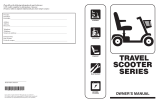 Pride Mobility S43379 Le manuel du propriétaire
Pride Mobility S43379 Le manuel du propriétaire
-
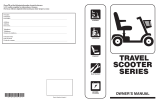 Pride Mobility Travel Scooter Le manuel du propriétaire
Pride Mobility Travel Scooter Le manuel du propriétaire
-
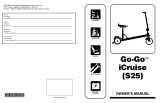 Pride Mobility iCruise Le manuel du propriétaire
Pride Mobility iCruise Le manuel du propriétaire
-
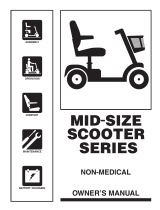 Pride Mobility Mid-Size Scooter Le manuel du propriétaire
Pride Mobility Mid-Size Scooter Le manuel du propriétaire
-
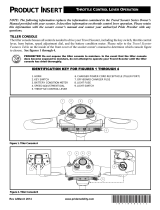 Pride Mobility Travel Scooter Le manuel du propriétaire
Pride Mobility Travel Scooter Le manuel du propriétaire
-
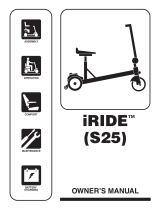 Pride Mobility iRIDE S25 Le manuel du propriétaire
Pride Mobility iRIDE S25 Le manuel du propriétaire
-
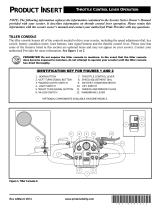 Pride Mobility Victory Le manuel du propriétaire
Pride Mobility Victory Le manuel du propriétaire
-
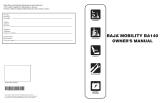 Pride Mobility Baja Bandit Owners Manual Le manuel du propriétaire
Pride Mobility Baja Bandit Owners Manual Le manuel du propriétaire
-
Vermeiren Antares 3 WT-T3J Le manuel du propriétaire
-
I-GO INFINFB4386 Folding Mobility Scooter Mobility Scooters Mode d'emploi



















































































































